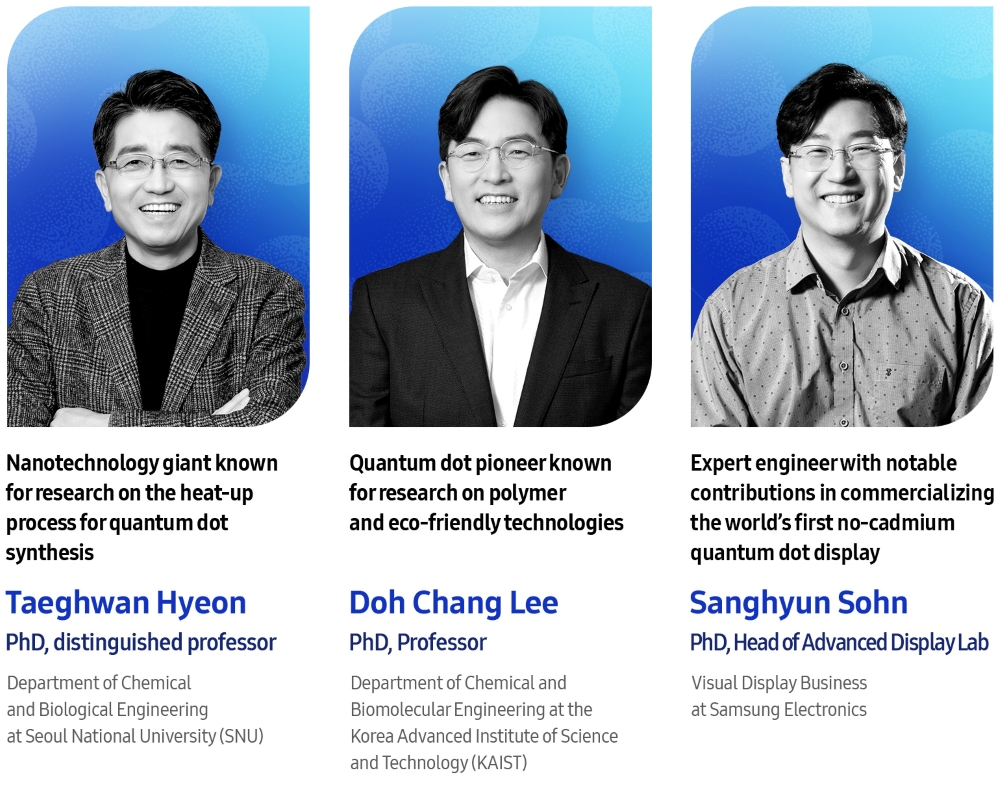Samsung Electronics’ decision to commercialize cadmium-free quantum dot displays wasn’t just a business move — it was a catalyst that accelerated scientific discovery and reshaped the display industry. In Part 2 of Samsung Newsroom’s interview series on real quantum dots, leading experts from academia and Samsung unpack how this engineering breakthrough set new standards and helped quantum dot research gain global recognition, including the 2023 Nobel Prize in Chemistry.
From Lab Curiosity to Industry Game-Changer

Quantum dots first caught the scientific world’s attention in the 1980s, but commercial adoption remained elusive — largely due to the use of cadmium, a toxic heavy metal restricted under global safety regulations. While cadmium-based quantum dots were easier to produce, their health risks stalled mainstream application.

Samsung, however, took a different path. Starting its research in 2001, the company committed early to a zero-cadmium policy, a bold move considering the material’s dominance in the field.
“No cadmium, no compromise — that was our strategy,” said Sanghyun Sohn, Head of Advanced Display Lab at Samsung. “There is simply no room for compromise when it comes to consumer safety.”
That decision led Samsung to develop and commercialize indium phosphide-based quantum dots, despite the material being more complex to synthesize and stabilize. Through rigorous research and a triple-layer coating innovation, Samsung achieved a breakthrough — launching its first cadmium-free SUHD TV in 2015 and later, its QLED lineup in 2017.
Setting the Standard for Real-World Impact

The academic response was swift. According to Professor Taeghwan Hyeon of Seoul National University, Samsung’s no-cadmium display played a pivotal role in transforming how quantum dots were perceived across the scientific community.
“I was truly impressed,” said Hyeon. “Commercializing indium-based quantum dots — despite their challenges — is a huge achievement. It helped quantum dots get the Nobel spotlight.”
This shift also caught the attention of Nobel Prize committees. When the 2023 Chemistry Nobel recognized pioneers Aleksey Yekimov, Louis Brus, and Moungi Bawendi for their work on quantum dots, Samsung’s role in scaling the technology from the lab to living rooms was hard to overlook.
“One of the key Nobel criteria is whether a discovery has benefited humanity through commercialization,” Hyeon added. “Samsung’s QLED made that possible.”
The Evolution of Display Technology

Samsung didn’t stop with QLED. In 2022, it introduced QD-OLED, a fusion of quantum dot and OLED technologies, which won Display of the Year from the Society for Information Display (SID) in 2023.
“Samsung remains the only company to successfully bring quantum dots into OLED,” said Sohn. “That’s a milestone that redefined premium displays.”
Now, Samsung is pushing toward self-emissive quantum dots that use electroluminescence — meaning each pixel emits light independently, without a backlight. This next-gen tech could unlock new possibilities for ultra-high-resolution displays and immersive AR/VR experiences.
A Clear Direction for the Future

“The goal is for displays to be so realistic, you forget you’re looking at one,” said Sohn.
The experts agree that Samsung’s commitment to innovation, from material science to commercial-scale engineering, not only helped quantum dots go mainstream but also inspired a shift in academic research — moving from theory to practical, life-enhancing applications.
“After Samsung’s launch, the research focus moved toward implementation, not just the material,” noted Professor Doh Chang Lee of KAIST.
With Samsung leading the charge, the future of quantum dots — and display technology as a whole — looks brighter than ever.
Explore Samsung’s latest displays and innovations:
👉 Samsung Malaysia TV lineup


